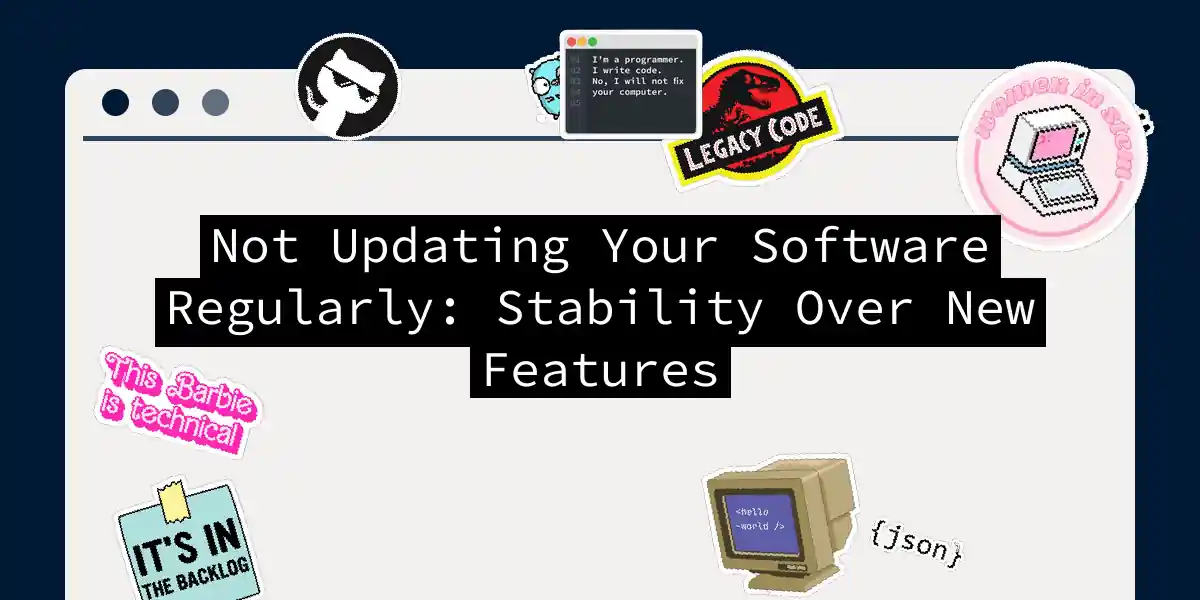The Update Dilemma: Stability vs. New Features
In the fast-paced world of software development, the age-old debate between prioritizing stability and embracing new features is a constant tug-of-war. While new features can make your software sleek and appealing, neglecting regular updates can turn your digital fortress into a vulnerable castle made of sand. Let’s dive into why keeping your software up-to-date is crucial, even if it means delaying those shiny new features.
The Security Imperative
Imagine your software as a house. If you don’t patch the holes and fix the broken locks, it’s only a matter of time before unwanted visitors start knocking on your door – or worse, breaking in. Cyber threats are evolving faster than ever, and hackers are always on the lookout for vulnerabilities to exploit. Regular software updates are your best defense against these threats.
Ignoring updates leaves your system open to security vulnerabilities, making it an easy target for malware, ransomware, and other malicious attacks. For instance, if a critical vulnerability is discovered in a piece of software, the developers will release a patch to fix it. Failing to apply this patch can lead to severe consequences, including data breaches and financial losses.
Stability and Performance
Stability is the backbone of any software system. When you skip updates, you’re not just risking security; you’re also compromising the overall performance and stability of your software. Updates often include bug fixes and performance optimizations that ensure your software runs smoothly and efficiently.
Regular updates rectify bugs, optimize resource usage, and enhance the overall user experience. For example, if your software is prone to crashes or slow performance, updates can address these issues, making your system more reliable and efficient.
Compatibility and Integration
In today’s interconnected world, software compatibility is more crucial than ever. Outdated software can lead to compatibility issues with other systems, applications, and devices. This can disrupt workflows, cause data exchange problems, and even lead to system instability.
Updates ensure that your software remains compatible with the latest advancements, allowing seamless integration with other tools and systems. This is particularly important in environments where multiple software applications and devices are used in tandem.
The Cost of Neglect
Neglecting software updates can have severe financial and reputational consequences. A breach due to outdated software can result in significant financial losses, legal repercussions, and damage to your brand’s reputation. Moreover, the cost of repairing and updating outdated systems can be far higher than the cost of regular maintenance.
Managing Updates Effectively
So, how do you manage software updates effectively without getting overwhelmed? Here are a few strategies:
Automatic Updates
Configuring automatic updates is one of the most efficient ways to keep your software current. This approach saves time and ensures that you don’t miss critical security patches or performance enhancements.
Prioritization
Not all updates are created equal. Prioritize updates based on their impact on security, performance, and compatibility. This helps you manage resources responsibly and ensures that the most critical updates are applied first.
Testing and Validation
Before deploying updates, especially in complex environments, it’s crucial to test them thoroughly. This ensures that the updates do not introduce new bugs or compatibility issues that could disrupt operations.
Conclusion
While new features can be enticing, they should never come at the cost of stability and security. Regular software updates are the unsung heroes of the digital world, ensuring that your systems remain secure, stable, and performant.
In the end, it’s not about choosing between stability and new features; it’s about finding a balance that keeps your software secure, efficient, and relevant. So, the next time you’re tempted to delay an update, remember: a secure and stable house is always better than a fancy but vulnerable one.
